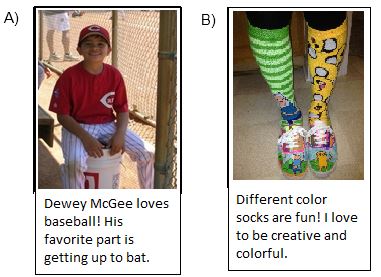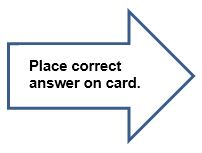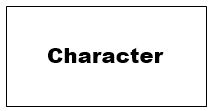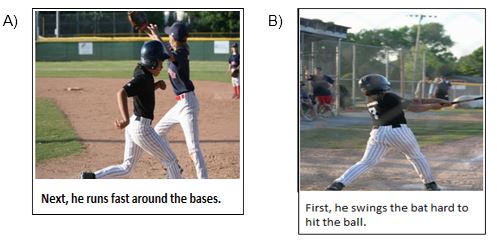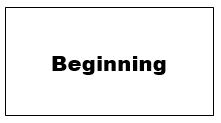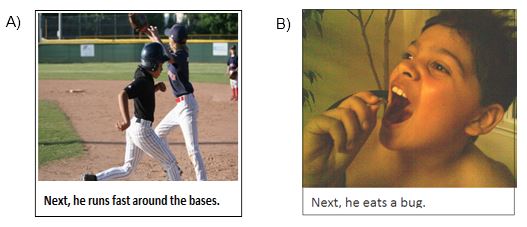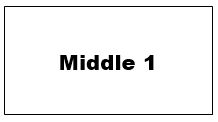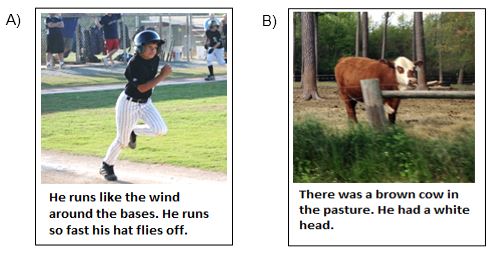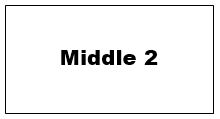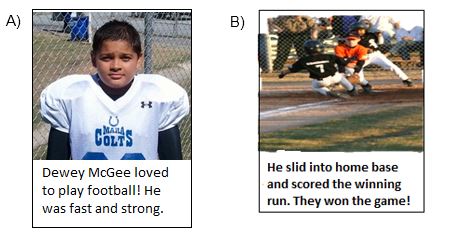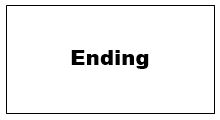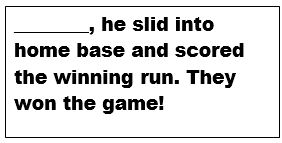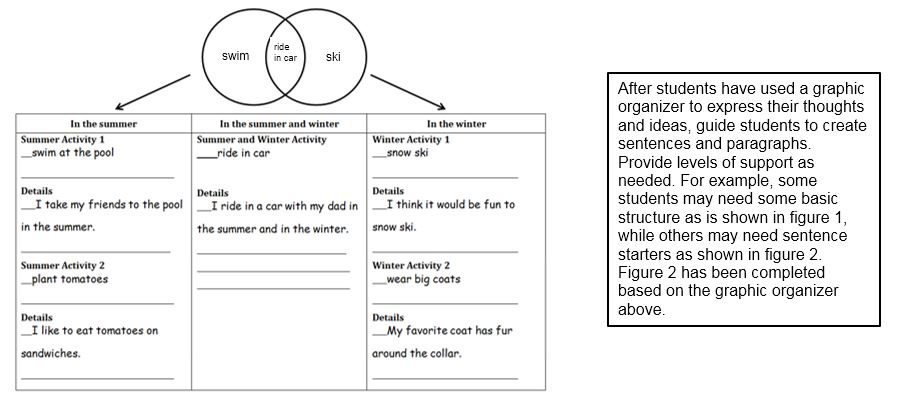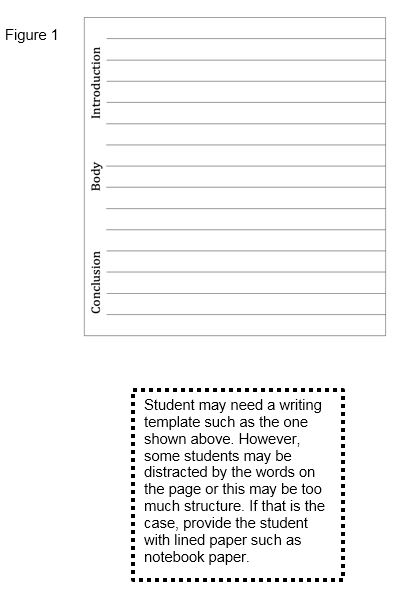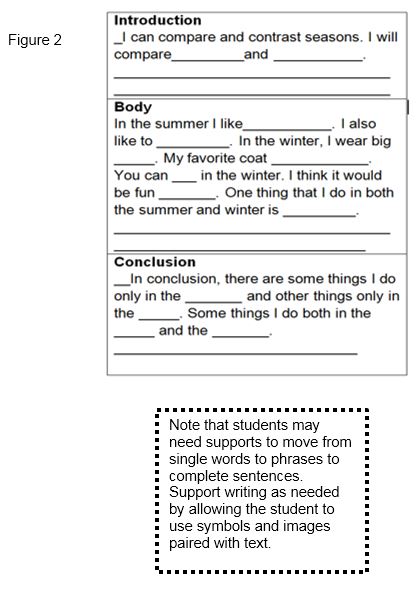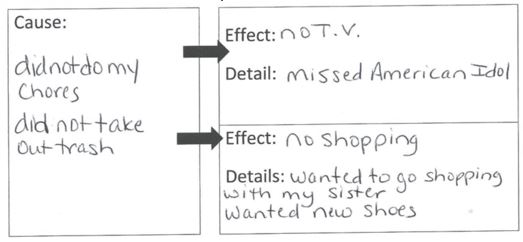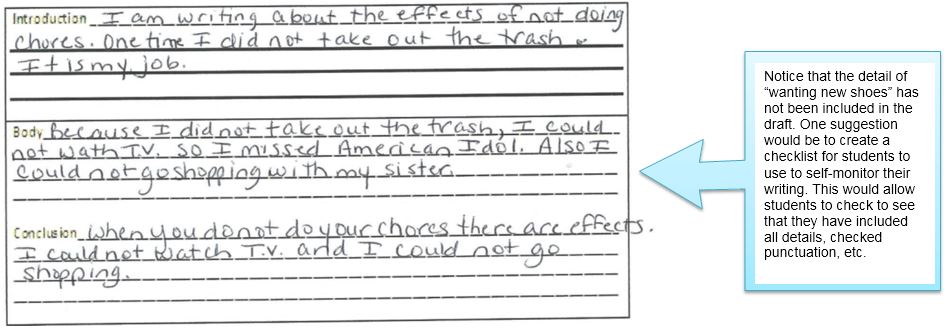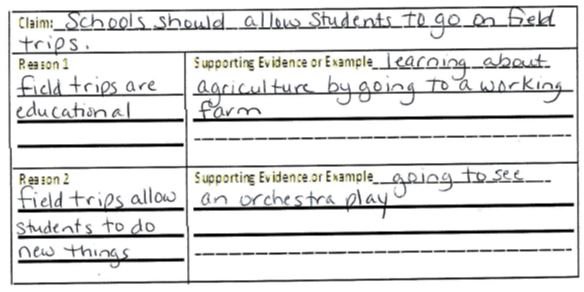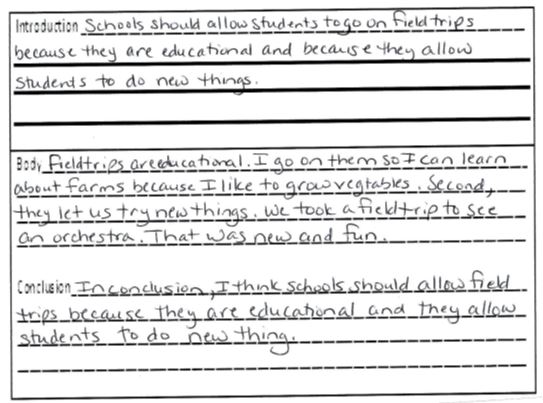Curriculum Resource Guide: Writing
(Created page with "'''Table of Contents''' '''[ 1a. What is "the writing process" and how is it taught in general education settings? 7]''' '''[ 1b. What are the "types of writing" and how are t...") |
|||
| (7 intermediate revisions by one user not shown) | |||
| Line 1: | Line 1: | ||
| − | + | {{BACK TO|[[Curriculum Resource Guides]]}} | |
| − | + | ||
| − | + | ||
| − | + | ||
| − | + | ||
| − | + | ||
| − | + | ||
| − | + | ||
| − | + | ||
| − | + | ||
| − | + | ||
| − | + | ||
| − | + | ||
| − | + | ||
| − | + | ||
| − | + | ||
| − | + | ||
| − | + | ||
| − | + | ||
| − | |||
| − | + | =Curriculum Resource to Prepare Students for AA-AAS English Language Arts Content: Writing*= | |
| + | |||
| + | <nowiki>*</nowiki>The term "writing" is used throughout this document with the assumption that student writing or permanent products are created through various modes (e.g., traditional writing, voice output devices, speech to text) of expression. NCSC defines writing as: Generating a permanent product to represent and/or organize ideas or thoughts so messages can be interpreted by someone else when the writer is not present. Symbols (e.g., picture''' '''symbols, objects) that represent and assistive technology that produce text may be used. | ||
| + | |||
'''The purposes of the Curriculum Resource Guides Are:''' | '''The purposes of the Curriculum Resource Guides Are:''' | ||
| Line 30: | Line 14: | ||
* To provide examples for differentiating instruction for a wide range of SWSCD. These examples can be used in planning specific lessons, alternate assessment items, and professional development. | * To provide examples for differentiating instruction for a wide range of SWSCD. These examples can be used in planning specific lessons, alternate assessment items, and professional development. | ||
| − | =1a. What is "the writing process" and how is it taught in general education settings?= | + | |
| + | ==1a. What is "the writing process" and how is it taught in general education settings?== | ||
'''Essential knowledge ''' | '''Essential knowledge ''' | ||
| − | Writing consists of more than just putting letters together to make words, and words together to make sentences. Writing is a way in which students can communicate and express themselves with respect to a specific task (e.g., topic), purpose (e.g., to inform), and audience (e.g., reader). Good writers go through several steps to produce a piece of writing. The writing process includes pre-writing, drafting, revising editing, and publishing. | + | |
| + | :Writing consists of more than just putting letters together to make words, and words together to make sentences. Writing is a way in which students can communicate and express themselves with respect to a specific task (e.g., topic), purpose (e.g., to inform), and audience (e.g., reader). Good writers go through several steps to produce a piece of writing. The writing process includes pre-writing, drafting, revising editing, and publishing. | ||
| + | |||
| + | |||
'''Prewriting''' | '''Prewriting''' | ||
| − | '''Step 1: '''Selecting a topic. Beginning writers often struggle to determine a topic and may require greater scaffolding. To support struggling students, teachers may assign a topic, guide students to self-select a topic, or present a list of topics from which the student may choose. | + | |
| − | '''Step 2: '''Determining form and function. | + | :'''Step 1:''' Selecting a topic. Beginning writers often struggle to determine a topic and may require greater scaffolding. To support struggling students, teachers may assign a topic, guide students to self-select a topic, or present a list of topics from which the student may choose. |
| − | '''Step 3:''' Gathering ideas. Once the topic has been determined, students should begin gathering ideas through brainstorming, discussions, or research. During this step, teacher often support students idea development or "get the ball rolling" by providing visual supports (objects, pictures, video clips, role play) or by explicitly modeling the brainstorming process. | + | |
| + | :'''Step 2:''' Determining form and function. This step involves determining the purpose and audience (i.e., decide what, why, and to whom you are writing). Since many struggling writers may not understand the purpose of writing beyond task completion, teachers may explicitly describe how a student's work might impact the reader. | ||
| + | |||
| + | :'''Step 3:''' Gathering ideas. Once the topic has been determined, students should begin gathering ideas through brainstorming, discussions, or research. During this step, teacher often support students idea development or "get the ball rolling" by providing visual supports (objects, pictures, video clips, role play) or by explicitly modeling the brainstorming process. | ||
| + | |||
'''Drafting ''' | '''Drafting ''' | ||
| − | '''Step 4:''' Organizing. Writers should begin to organize the information gathered during prewriting. Choose which idea to address first, next, and last. The use of graphic organizer can be very helpful in this process. | + | |
| − | '''Step 5: '''Writing. | + | :'''Step 4:''' Organizing. Writers should begin to organize the information gathered during prewriting. Choose which idea to address first, next, and last. The use of graphic organizer can be very helpful in this process. |
| + | |||
| + | :'''Step 5:''' Writing. Students should draft paragraphs or work from start to finish, using notes or a graphic organizer. Drafting focuses on the development of ideas. Students often find this step to be challenging and will require scaffolding to introduce, conclude and/or elaborating on ideas. | ||
| + | |||
'''Revising''' | '''Revising''' | ||
| − | '''Step 6: Reviewing and Revising '''the content and structure of writing. | + | |
| + | :'''Step 6: Reviewing and Revising''' the content and structure of writing. Students should check what they have written by reviewing their work. They may review their work silently, read aloud using a whisper phone or read their work to a partner. They should identify areas in need of additional information and where unnecessary information should be removed. At this point in the writing process, students may be able to revise the work of their peers. | ||
| + | |||
'''Editing''' | '''Editing''' | ||
| − | '''Step 7: Editing. '''Students should review work to ensure that grammar, spelling, and punctuation usage is correct. | + | |
| + | :'''Step 7: Editing. '''Students should review work to ensure that grammar, spelling, and punctuation usage is correct. | ||
| + | |||
'''Publishing''' | '''Publishing''' | ||
| − | '''Step 8: Publishing. '''Students should have the opportunity to share their work with others. Some examples of classroom publishing include: | + | |
| − | * Read-alouds | + | :'''Step 8: Publishing. '''Students should have the opportunity to share their work with others. Some examples of classroom publishing include: |
| − | * Bulletin boards of student work | + | :* Read-alouds |
| − | * Class websites | + | :* Bulletin boards of student work |
| − | * Class anthologies | + | :* Class websites |
| + | :* Class anthologies | ||
| + | |||
| + | |||
'''Areas that may require additional scaffolding''' | '''Areas that may require additional scaffolding''' | ||
| − | * Students often struggle to generate ideas and topics during brainstorming and often require additional support, especially when new to the writing process. | + | :* Students often struggle to generate ideas and topics during brainstorming and often require additional support, especially when new to the writing process. |
| − | * Students often struggle to meet writing goals without models of good writing in multiple formats. | + | :* Students often struggle to meet writing goals without models of good writing in multiple formats. |
| − | * Students require training to effectively peer edit during the writing process. | + | :* Students require training to effectively peer edit during the writing process. |
| + | |||
'''Prior knowledge/skills needed or supported during the writing process (can be taught concurrently)''' | '''Prior knowledge/skills needed or supported during the writing process (can be taught concurrently)''' | ||
| Line 66: | Line 69: | ||
| − | =1b. What are the "types of writing" and how are they taught in the general education setting? = | + | ==1b. What are the "types of writing" and how are they taught in the general education setting?== |
| + | |||
'''Essential knowledge''' | '''Essential knowledge''' | ||
| + | |||
There are three types of writing: informational, narrative, and persuasive/argumentative. | There are three types of writing: informational, narrative, and persuasive/argumentative. | ||
| − | '''Informational Writing ''' | + | |
| + | <u>'''Informational Writing'''</u> | ||
| + | |||
The purpose of informative/descriptive writing is to inform the reader about a topic. This type of writing can be done for any subject and can take a wide variety of formats (e.g., newsletter, research paper). This type of writing should include information that can be the result of prior knowledge and/or research but should not include the opinions of the author. | The purpose of informative/descriptive writing is to inform the reader about a topic. This type of writing can be done for any subject and can take a wide variety of formats (e.g., newsletter, research paper). This type of writing should include information that can be the result of prior knowledge and/or research but should not include the opinions of the author. | ||
| − | '''Narrative Writing''' | + | |
| + | <u>'''Narrative Writing'''</u> | ||
| + | |||
The purpose of narrative writing is to entertain or inform the reader. Narratives can describe real or fictional events and should include the essential elements of story grammar (e.g., characters, setting, and plot). Narrative writing can be driven by a theme or message. | The purpose of narrative writing is to entertain or inform the reader. Narratives can describe real or fictional events and should include the essential elements of story grammar (e.g., characters, setting, and plot). Narrative writing can be driven by a theme or message. | ||
| − | '''Persuasive Writing''' | + | |
| + | <u>'''Persuasive Writing'''</u> | ||
| + | |||
The purpose of persuasive writing is to convince the reader to agree with the perspective of the author. The author's reasons for persuasion must be supported by facts and evidence and also should acknowledge the counterargument. | The purpose of persuasive writing is to convince the reader to agree with the perspective of the author. The author's reasons for persuasion must be supported by facts and evidence and also should acknowledge the counterargument. | ||
| − | Additional information about types of writing can be found in the resources for the Common Core [http://www.corestandards.org/assets/Appendix_A.pdf http://www.corestandards.org/assets/Appendix_A.pdf] | + | Additional information about types of writing can be found in the resources for the Common Core [http://www.corestandards.org/assets/Appendix_A.pdf http://www.corestandards.org/assets/Appendix_A.pdf]. |
| + | |||
| + | |||
| + | |||
=2. What are some of the types of activities general educators use to teach this skill?= | =2. What are some of the types of activities general educators use to teach this skill?= | ||
| Line 92: | Line 106: | ||
* '''Writing Time''' allows students to apply the topics addressed in a mini-lesson, work independently and in groups and provides time for students to conference with peers or the teacher about their writing. Time allotted for writing is based on students' abilities and engagement with the task, but students should receive daily extended time to write. | * '''Writing Time''' allows students to apply the topics addressed in a mini-lesson, work independently and in groups and provides time for students to conference with peers or the teacher about their writing. Time allotted for writing is based on students' abilities and engagement with the task, but students should receive daily extended time to write. | ||
* '''Sharing''' occurs at the end of the lesson when students to read or post their work and get feedback from the teacher and their peers. Students usually receive between 5 and 15 minutes to share. | * '''Sharing''' occurs at the end of the lesson when students to read or post their work and get feedback from the teacher and their peers. Students usually receive between 5 and 15 minutes to share. | ||
| + | |||
'''Mini-lessons''' | '''Mini-lessons''' | ||
{|border=1 | {|border=1 | ||
| − | |width = " | + | |width = "500"|'''Lesson examples''' |
| − | |width = " | + | |width = "500"|Skills: |
* Grammar | * Grammar | ||
* Punctuation | * Punctuation | ||
* Spelling | * Spelling | ||
| − | + | |width = "500"|Author's Craft: | |
| − | |width = " | + | |
* Effective word choice | * Effective word choice | ||
* Sentence structure/fluency | * Sentence structure/fluency | ||
* Organization of ideas | * Organization of ideas | ||
| − | |width = " | + | |width = "500"|Strategy use: |
* Picking/narrowing a topic | * Picking/narrowing a topic | ||
* Elaborating ideas/providing details | * Elaborating ideas/providing details | ||
|- | |- | ||
| − | | | + | ||'''Connect:''' (1-2 minutes) |
| + | |||
Activate prior knowledge | Activate prior knowledge | ||
| − | | | + | ||Explain the impact of skills on writing |
| − | | | + | ||Explain the impact of author's craft on writing |
| − | | | + | ||Explain how strategy use can enhance writing |
|- | |- | ||
| − | | | + | ||'''Teach:''' (5-6 minutes) |
| + | |||
Explain and model topic | Explain and model topic | ||
| − | | | + | ||Explicitly teach skill |
| − | | | + | ||Explicitly model examples of good writing |
| − | | | + | ||Explicitly teach and model writing strategies |
|- | |- | ||
| − | | | + | ||'''Engage:''' (2-3 minutes) |
| + | |||
Allow for practice and offer feedback | Allow for practice and offer feedback | ||
| − | | | + | ||Allow students to practice during freewrites or in editing sentences |
| − | | | + | ||Allow students to write to a mentor text or allow them to evaluate examples of good writing |
| − | | | + | ||Allow students to practice strategies |
|- | |- | ||
| − | | | + | ||'''Link:''' (1-2 minutes) |
Review and clarify understanding | Review and clarify understanding | ||
| − | | | + | ||Review skill taught and explain how it can improve or enhance writing |
| − | | | + | ||Review ideas taught and explain how it can improve or enhance writing |
| − | | | + | ||Review the strategy and explain how it can improve or enhance writing |
| − | |||
|} | |} | ||
| − | For more information on Writer's Workshop: [ | + | For more information on Writer's Workshop: [http://www.ttms.org/PDFs/05%20Writers%20Workshop%20v001%20%28Full%29.pdf] |
| − | + | ||
| + | |||
| + | |||
=3. What Connectors to the Common Core State Standards Are Addressed in Teaching "Writing"?= | =3. What Connectors to the Common Core State Standards Are Addressed in Teaching "Writing"?= | ||
'''These CCCs can be accessed via the NCSC Wiki at: ''' | '''These CCCs can be accessed via the NCSC Wiki at: ''' | ||
| + | |||
[https://wiki.ncscpartners.org/index.php/Main_Page https://wiki.ncscpartners.org/index.php/Main_Page] | [https://wiki.ncscpartners.org/index.php/Main_Page https://wiki.ncscpartners.org/index.php/Main_Page] | ||
| + | |||
From the main page of the NCSC Wiki, use the search function or click on "Curriculum Resources" | From the main page of the NCSC Wiki, use the search function or click on "Curriculum Resources" | ||
| + | |||
'''Strategies for preparing students for the writing assessment''' | '''Strategies for preparing students for the writing assessment''' | ||
| Line 173: | Line 194: | ||
* Create a self-monitoring checklist that students can use during all phases of the writing process but especially during the edit and revise phase. Students can review their writing (whether traditionally written or scribed) and use their checklist to make corrections. | * Create a self-monitoring checklist that students can use during all phases of the writing process but especially during the edit and revise phase. Students can review their writing (whether traditionally written or scribed) and use their checklist to make corrections. | ||
* When planning writing instruction, consider your students' present level of writing ability and prior instruction in writing. In some cases, the skills addressed in the CCCs may be too advanced. If so, consider instruction aligned with the Essential Understandings. The 3<sup>rd</sup> grade performance example below demonstrates performance that is aligned with the Essential Understandings. | * When planning writing instruction, consider your students' present level of writing ability and prior instruction in writing. In some cases, the skills addressed in the CCCs may be too advanced. If so, consider instruction aligned with the Essential Understandings. The 3<sup>rd</sup> grade performance example below demonstrates performance that is aligned with the Essential Understandings. | ||
| − | + | ||
| + | |||
{|border=1 | {|border=1 | ||
| − | | | + | | colspan=2 style="text-align:center;"|'''Performance Examples for Prioritized CCCs''' |
|- | |- | ||
| − | | style="background-color:#D9D9D9;"|'''Grade 3''' | + | | colspan=2 style="background-color:#D9D9D9;"|<div style="text-align:center;">'''Grade 3'''</div> |
|- | |- | ||
| − | | | + | | width= "1000"|'''CCCs''' |
| − | | | + | | width= "1000"|'''Essential Understandings''' |
|- | |- | ||
| − | | | + | ||'''3.WL.o1''' With guidance and support from adults, produce a clear, coherent, permanent product that is appropriate to the specific task, purpose (e.g., to entertain), or audience. |
| − | | | + | ||Given a specific purpose, produce a permanent product (e.g., selects text appropriate to the purpose, identify descriptive sentences, and select a concluding statement). |
|- | |- | ||
| − | | | + | ||3.WL.j1 Set up the context for the story and introduce a narrator and/or characters. |
| − | | style=" | + | ||<div style="text-align:center;">Describe a character and setting for a given text.</div> |
| − | THEN | + | <div style="text-align:center;">THEN</div> |
| − | Identify text that introduces a character. | + | <div style="text-align:center;">Identify text that introduces a character.</div> |
|- | |- | ||
| − | | | + | ||3.WL.j2 Sequence events in writing that unfold naturally. |
| − | + | ||<div style="text-align:center;">Sequence a set of illustrations that match a text.</div> | |
| − | | style=" | + | <div style="text-align:center;">THEN</div> |
| − | THEN | + | <div style="text-align:center;">Sequence events of beginning, middle and end of a text.</div> |
| − | Sequence events of beginning, middle and end of a text. | + | <div style="text-align:center;">THEN</div> |
| − | THEN | + | <div style="text-align:center;">With support (e.g., a graphic organizer), create a simple story about a real or imagined experience with a beginning, middle, and end.</div> |
| − | With support (e.g., a graphic organizer), create a simple story about a real or imagined experience with a beginning, middle, and end. | + | |
|- | |- | ||
| − | | | + | ||3.WL.k1 When appropriate use dialogue and descriptions of actions, thoughts, and feelings to develop a story. |
| − | | style=" | + | ||<div style="text-align:center;">Identify descriptive words that help develop the story (i.e., relevant description vs. non relevant).</div> |
| − | THEN | + | <div style="text-align:center;">THEN</div> |
| − | Given two lists, match narrative techniques, such as dialogue and description, to the correct example. | + | <div style="text-align:center;">Given two lists, match narrative techniques, such as dialogue and description, to the correct example.</div> |
| − | THEN | + | <div style="text-align:center;">THEN</div> |
| − | With prompting and support, add dialogue and/or description in an original story. | + | <div style="text-align:center;">With prompting and support, add dialogue and/or description in an original story.</div> |
|- | |- | ||
| − | | | + | ||3.WL.l1 Use temporal words and phrases to signal event order. |
| − | | | + | ||Insert the appropriate signal word in provided text (e.g., in the morning, after we left the park). |
|- | |- | ||
| − | | | + | ||3.WL.m1 Provide a concluding statement or paragraph that follows from the narrated experiences or events. |
| − | + | ||<div style="text-align:center;">From a given list, identify the appropriate conclusion to a provided story.</div> | |
| − | + | <div style="text-align:center;">THEN</div> | |
| − | | style=" | + | <div style="text-align:center;">With guidance and support from adults, provide the ending of a story.</div> |
| − | THEN | + | |
| − | With guidance and support from adults, provide the ending of a story. | + | |
|- | |- | ||
| − | | | + | | colspan=2|<font size=3>'''Text Type: Narrative'''</font> |
| + | |||
This Performance Example targets skills from the third grade Essential Understandings. The skills demonstrated in this Performance Example include: describing a character, sequencing events from beginning to end, identifying descriptive words that develop the story, and the appropriate use of temporal words (e.g., first, last). | This Performance Example targets skills from the third grade Essential Understandings. The skills demonstrated in this Performance Example include: describing a character, sequencing events from beginning to end, identifying descriptive words that develop the story, and the appropriate use of temporal words (e.g., first, last). | ||
| + | |||
When targeting the Essential Understandings, maximum supports and scaffolds may be needed. Students may select from presented response options rather than generate original content. Students learning these target skills should already understand what a character is and have some understanding of sequencing from first to last. | When targeting the Essential Understandings, maximum supports and scaffolds may be needed. Students may select from presented response options rather than generate original content. Students learning these target skills should already understand what a character is and have some understanding of sequencing from first to last. | ||
|- | |- | ||
| − | | | + | ||Step 1. You will write a story about a boy named Dewey McGee. Which sentence describes the character, Dewey McGee? |
| + | |||
'''Note: During instruction, if the student makes an error or does not respond, use a system of least prompts to ensure that the correct answer is placed on the card. This applies to steps 1-6.''' | '''Note: During instruction, if the student makes an error or does not respond, use a system of least prompts to ensure that the correct answer is placed on the card. This applies to steps 1-6.''' | ||
| − | + | [[Image:CRGW1.JPG|A kid wearing a baseball uniform waiting for his turn at bat and a pair of different colored socks.]] [[Image:CRGWArrow.JPG|Place correct answer on card.]] | |
| − | | | + | ||[[Image:CRGW2.JPG|center|The "Character" place card.]] |
|- | |- | ||
| − | | | + | ||Step 2. Remember that stories have a beginning, middle, and end. The beginning is an event that happens first. Which sentence tells the event that happens first? |
| + | [[Image:CRGW3.JPG|A picture of Dewey running to a base and a picture Dewey swinging a bat]] [[Image:CRGWArrow.JPG|Place correct answer on card.]] | ||
| − | | | + | ||[[Image:CRGW4.JPG|center|The "Beginning" place card.]] |
| − | + | ||
| − | + | ||
| − | + | ||
| − | + | ||
| − | + | ||
|- | |- | ||
| − | | | + | ||Step 3. Now write the middle of the story. Which sentence comes after "He loves baseball. First he swings hard to hit the ball."? |
| − | + | ||
| − | + | [[Image:CRGW5.JPG|A picture of Dewey running to a base and a picture of Dewey holding a bug to his mouth]] [[Image:CRGWArrow.JPG|Place correct answer on card.]] | |
| − | | | + | |
| + | ||[[Image:CRGW6.JPG|center|The "Middle 1" place card.]] | ||
|- | |- | ||
| − | | | + | ||Step 4. Now add details that describe how Dewey runs around the bases. Which sentences describe how Dewey runs? |
| − | + | [[Image:CRGW7.JPG|A picture of Dewey running around the bases and a cow grazing behind a fence]] [[Image:CRGWArrow.JPG|Place correct answer on card.]] | |
| − | + | ||
| − | | | + | |
| + | ||[[Image:CRGW8.JPG|center|The "Middle 2" place card.]] | ||
|- | |- | ||
| − | | | + | ||Step 5. All stories need an ending. Which of these sentences provide an ending for your story? |
| − | + | [[Image:CRGW9.JPG|Dewey standing in his football uniform and Dewey sliding across home plate]] [[Image:CRGWArrow.JPG|Place correct answer on card.]] | |
| − | | | + | ||[[Image:CRGW10.JPG|center|The "Ending" place card.]] |
|- | |- | ||
| − | | | + | ||Step 6. You need to add some words to let the reader know this is the end of your story. Which words can you add to show it's the end? |
| − | + | ||
| − | + | ||
| + | [[Image:CRGW11.JPG|Two place cards, Option A "In the end", and Option B, "Once upon a time".]] [[Image:CRGWArrow.JPG|Place correct answer on card.]] | ||
| − | | | + | ||[[Image:CRGW12.JPG|center|The final place card ", he slid into home base and scored the winning run. They won the game!".]] |
|- | |- | ||
| − | | | + | ||Step 7. Your story is complete. I will read your story to you. |
'''Dewey McGee loves baseball. His favorite part is getting up to bat. First, he swings the bat hard to hit the ball. Next, he runs fast around the bases. He runs like the wind around the bases. He runs so fast his hat flies off. In the end, he slid into home base and scored the winning run. They won the game!''' | '''Dewey McGee loves baseball. His favorite part is getting up to bat. First, he swings the bat hard to hit the ball. Next, he runs fast around the bases. He runs like the wind around the bases. He runs so fast his hat flies off. In the end, he slid into home base and scored the winning run. They won the game!''' | ||
| + | || | ||
| − | |||
| − | |||
| − | |||
|} | |} | ||
{|border=1 | {|border=1 | ||
| − | | | + | | colspan=2 style="text-align:center"|'''Performance Examples ''' |
|- | |- | ||
| − | | style="background-color:#D9D9D9;"|'''Grade 6''' | + | | colspan=2 style="background-color:#D9D9D9;"|<div style="text-align:center;">'''Grade 6'''</div> |
|- | |- | ||
| − | | | + | | width= "1000"|'''CCCs''' |
| − | | | + | | width= "1000"|'''Essential Understandings''' |
|- | |- | ||
| − | | | + | ||6.WI.b2 Organize ideas, concepts, and information (e.g., using definition, classification, comparison/contrast, cause/effect). |
| − | | style=" | + | ||<div style="text-align:center;">Identify relationship of set of items in various categories (definition, classification, compare/contrast, cause/effect).</div> |
| − | THEN | + | <div style="text-align:center;">THEN</div> |
| − | Identify the text structure of a provided text. | + | <div style="text-align:center;">Identify the text structure of a provided text.</div> |
| − | THEN | + | <div style="text-align:center;">THEN</div> |
| − | With guidance and support, outline a list of key ideas, concepts and information from a provided text. | + | <div style="text-align:center;">With guidance and support, outline a list of key ideas, concepts and information from a provided text.</div> |
|- | |- | ||
| − | | | + | ||6.WL.c1 Organize ideas and event so that they unfold naturally. |
| − | | style=" | + | ||<div style="text-align:center;">Sequence a set of illustrations that match a text.</div> |
| − | THEN | + | <div style="text-align:center;">THEN</div> |
| − | Sequence events of beginning, middle and end of a text. | + | <div style="text-align:center;">Sequence events of beginning, middle and end of a text.</div> |
| − | THEN | + | <div style="text-align:center;">THEN</div> |
| − | With support (e.g., a graphic organizer), create a simple story about a real or imagined experience with a beginning, middle, and end. | + | <div style="text-align:center;">With support (e.g., a graphic organizer), create a simple story about a real or imagined experience with a beginning, middle, and end.</div> |
|- | |- | ||
| − | | | + | ||6.WL.c3 Use a variety of transition words, phrases, and clauses to convey sequence and signal shifts from one time frame or setting to another. |
| − | + | ||<div style="text-align:center;">Match transition words, phrases, and clauses within a text.</div> | |
| − | | style=" | + | <div style="text-align:center;">THEN</div> |
| − | THEN | + | <div style="text-align:center;">From a given list, identify the transition words or phrases that convey sequence or signal shifts from one time frame to another (e.g., "In the past," "The next day," etc.).</div> |
| − | From a given list, identify the transition words or phrases that convey sequence or signal shifts from one time frame to another (e.g., "In the past," "The next day," etc.). | + | <div style="text-align:center;">THEN</div> |
| − | THEN | + | <div style="text-align:center;">Add a variety of transition words or phrases to convey sequence and signal shifts from one time frame or setting to another within a story.</div> |
| − | Add a variety of transition words or phrases to convey sequence and signal shifts from one time frame or setting to another within a story. | + | |
|- | |- | ||
| − | | | + | ||6.WI.h2 Produce a clear coherent permanent product that is appropriate to the specific task (e.g., topic), purpose (e.g., to inform), and audience (e.g., reader). |
| − | | | + | ||Given a specific purpose, produce a permanent product (e.g., identifies text appropriate to the purpose, identify descriptive sentences, and identify a concluding statement). |
| − | |||
|} | |} | ||
| + | |||
{|border=1 | {|border=1 | ||
| − | | | + | | colspan=2|<font size=3>'''Text Type: Informational / Compare and Contrast'''</font> |
| + | |||
Students may create writing pieces that compare and contrast two topics, events, or characters. Provide scaffolded supports for students as they write. For example, if students are not able to generate ideas during brainstorming activities, teachers might provide ideas from which students could select. Below is a sample of a graphic organizer that can be used by students to organize ideas to create a compare and contrast text. In the example below, students have been asked to compare and contrast activities people might do in the summer to those in the winter. The graphic organizer shown below has been completed with words and phrases but also could be completed with symbols, photographs, objects or tactile representations. | Students may create writing pieces that compare and contrast two topics, events, or characters. Provide scaffolded supports for students as they write. For example, if students are not able to generate ideas during brainstorming activities, teachers might provide ideas from which students could select. Below is a sample of a graphic organizer that can be used by students to organize ideas to create a compare and contrast text. In the example below, students have been asked to compare and contrast activities people might do in the summer to those in the winter. The graphic organizer shown below has been completed with words and phrases but also could be completed with symbols, photographs, objects or tactile representations. | ||
| − | + | [[Image:CRGW13.JPG|center|A graphic organizer for comparing and contrasting activities of the summer and winter.]] | |
| − | + | ||
| − | + | ||
| − | + | ||
| − | + | ||
| − | + | ||
| − | + | ||
| − | + | ||
| − | + | ||
| − | + | ||
| − | + | ||
| − | + | ||
| − | + | ||
| − | + | ||
| − | + | ||
| − | + | ||
| − | + | ||
| − | + | ||
| − | + | ||
| − | + | ||
| − | + | ||
| − | + | ||
| − | + | ||
| − | + | ||
| − | + | ||
| − | + | ||
| − | + | ||
| − | + | ||
| − | + | ||
| − | + | ||
| − | + | ||
| − | + | ||
| − | + | ||
| − | + | ||
| − | + | ||
| − | + | ||
| − | + | ||
| − | + | ||
| − | + | ||
| − | + | ||
| − | + | ||
| + | <font size=3>'''Text Type: Informational / Compare and Contrast cont.'''</font> | ||
| + | [[Image:CRGW14.JPG||A writing template for assisting a student to compare and contrast.]] [[Image:CRGW15.JPG||A writing template with supports for assisting a student to compare and contrast.]] | ||
|- | |- | ||
| − | | style="background-color:#D9D9D9;"|'''Grade 7''' | + | | colspan=2 style="background-color:#D9D9D9;"|<div style="text-align:center;">'''Grade 7'''</div> |
|- | |- | ||
| − | | | + | | width= "1000"|'''CCCs ''' |
| − | | | + | | width= "1000"|'''Essential Understandings''' |
|- | |- | ||
| − | | | + | ||7.WI.j2 Organize ideas, concepts, and information (e.g., using definition, classification, comparison/contrast, cause/effect). |
| − | | style=" | + | ||<div style="text-align:center;">Identify relationship of set of items in various categories (definition, classification, compare/contrast, cause/effect).</div> |
| − | THEN | + | <div style="text-align:center;">THEN</div> |
| − | Identify the text structure of a provided text. | + | <div style="text-align:center;">Identify the text structure of a provided text.</div> |
| − | THEN | + | <div style="text-align:center;">THEN</div> |
| − | With guidance and support, outline a list of key ideas, concepts and information from a provided text. | + | <div style="text-align:center;">With guidance and support, outline a list of key ideas, concepts and information from a provided text.</div> |
|- | |- | ||
| − | | | + | ||7.WL.l1 Use precise words and phrases, relevant descriptive details, and sensory language to capture the action and convey experiences and events |
| − | | style=" | + | ||<div style="text-align:center;">Identify a visual image to match provided text.</div> |
| − | THEN | + | <div style="text-align:center;">THEN</div> |
| − | Identify precise words and phrases, relevant details, and/or sensory language that convey action, experiences and/or events in a provided text. | + | <div style="text-align:center;">Identify precise words and phrases, relevant details, and/or sensory language that convey action, experiences and/or events in a provided text.</div> |
| − | THEN | + | <div style="text-align:center;">THEN</div> |
| − | Add precise words and phrases and relevant details to a familiar story that does not include these elements. | + | <div style="text-align:center;">Add precise words and phrases and relevant details to a familiar story that does not include these elements.</div> |
|- | |- | ||
| − | | | + | ||7.WL.o1 Provide a conclusion that follows from the narrated experiences or events. |
| − | | style=" | + | ||<div style="text-align:center;">From a given list, identify the appropriate conclusion to a provided story.</div> |
| − | THEN | + | <div style="text-align:center;">THEN</div> |
| − | Add an appropriate conclusion to a narrated experience or sequence of events. | + | <div style="text-align:center;">Add an appropriate conclusion to a narrated experience or sequence of events.</div> |
|- | |- | ||
| − | | | + | ||7.WI.o1 Produce a clear coherent permanent product that is appropriate to the specific task (e.g., topic), purpose (e.g., to inform), and audience (e.g., reader). |
| − | | | + | ||Given a specific purpose, produce a permanent product (e.g., select text appropriate to the purpose, identify descriptive sentences, and select a concluding statement). |
| − | |||
|} | |} | ||
| + | |||
{|border=1 | {|border=1 | ||
| − | | | + | | colspan=2|<font size=3>'''Text Types: Informational/Cause and Effect'''</font> |
| + | |||
Students may create writing pieces about a cause and its effect. The graphic organizer shown below has been completed with words and phrases but also could be completed with symbols, photographs, objects or tactile representations. | Students may create writing pieces about a cause and its effect. The graphic organizer shown below has been completed with words and phrases but also could be completed with symbols, photographs, objects or tactile representations. | ||
| Line 447: | Line 424: | ||
# Have to do extra chores | # Have to do extra chores | ||
# Have to go to bed early | # Have to go to bed early | ||
| + | |||
Ask the student to choose two or three of the effects and then provide their own details. | Ask the student to choose two or three of the effects and then provide their own details. | ||
| − | |||
| + | [[Image:CRGW16.JPG|center|A cause and effect graphic organizer.]] | ||
| − | + | ||
| + | [[Image:CRGW17.JPG|center|A cause and effect writing template.]] | ||
Students should be reminded to use transition words, end punctuation and correct capitalization. After students have completed a draft, students may review their draft to make any final edits (e.g., add details, transition words, end punctuation). | Students should be reminded to use transition words, end punctuation and correct capitalization. After students have completed a draft, students may review their draft to make any final edits (e.g., add details, transition words, end punctuation). | ||
| − | |||
| − | |||
| − | |||
| − | |||
| − | |||
| − | |||
| − | |||
| − | |||
| − | |||
| − | |||
| − | |||
| − | |||
| − | |||
| − | |||
| − | |||
|- | |- | ||
| − | | style="background-color:#D9D9D9;"|'''Grades 9-12''' | + | | colspan=2 style="background-color:#D9D9D9;"|<div style="text-align:center;">'''Grades 9-12'''</div> |
|- | |- | ||
| − | | | + | | width= "1000"|'''CCCs''' |
| − | | | + | | width= "1000"|'''Essential Understandings''' |
|- | |- | ||
| − | | | + | ||1112.WP.b3 Introduce claim(s) for an argument that reflects knowledge of the topic. |
| − | | style=" | + | ||<div style="text-align:center;">Identify the claim within a persuasive text.</div> |
| − | THEN | + | <div style="text-align:center;">THEN</div> |
| − | Match claims to an argument. | + | <div style="text-align:center;">Match claims to an argument.</div> |
| − | THEN | + | <div style="text-align:center;">THEN</div> |
| − | Identify context that establishes the importance of a provided claim. | + | <div style="text-align:center;">Identify context that establishes the importance of a provided claim.</div> |
|- | |- | ||
| − | | | + | ||1112.WI.b2 Create an organizational structure for writing that groups information logically (e.g., cause/effect, compare/contrast, descriptions and examples) to support paragraph focus. |
| − | | style=" | + | ||<div style="text-align:center;">Identify relationship of set of items in various categories (definition, classification, compare/contrast, cause/effect).</div> |
| − | THEN | + | <div style="text-align:center;">THEN</div> |
| − | Identify the text structure of a provided text. | + | <div style="text-align:center;">Identify the text structure of a provided text.</div> |
| − | THEN | + | <div style="text-align:center;">THEN</div> |
| − | With guidance and support, outline a list of key ideas, concepts and information from a provided text. | + | <div style="text-align:center;">With guidance and support, outline a list of key ideas, concepts and information from a provided text.</div> |
|- | |- | ||
| − | | | + | ||1112.WI.b4 Provide the facts, extended definitions, concrete details, quotations, or other information and examples that are most relevant to the focus and appropriate for the audience. |
| − | | style=" | + | ||<div style="text-align:center;">With guidance and support, sort relevant and irrelevant information related to a given topic into the correct categories.</div> |
| − | THEN | + | <div style="text-align:center;">THEN</div> |
| − | Identify facts and details related to a specified topic. | + | <div style="text-align:center;">Identify facts and details related to a specified topic.</div> |
| − | THEN | + | <div style="text-align:center;">THEN</div> |
| − | Develop the topic by identifying at least one relevant fact, definition, quote, example or detail. | + | <div style="text-align:center;">Develop the topic by identifying at least one relevant fact, definition, quote, example or detail.</div> |
| − | THEN | + | <div style="text-align:center;">THEN</div> |
| − | With guidance and support, list characteristics of a given audience that might change the focus of the writing. | + | <div style="text-align:center;">With guidance and support, list characteristics of a given audience that might change the focus of the writing.</div> |
|- | |- | ||
| − | | | + | ||1112.WP.f1 Produce a clear coherent permanent product that is appropriate to the specific task, purpose (to persuade), and audience. |
| − | | | + | ||Given a specific purpose, produce a permanent product (e.g., select text appropriate to the purpose, identify descriptive sentences, and select a concluding statement). |
| − | |||
|} | |} | ||
| + | |||
{|border=1 | {|border=1 | ||
| − | | | + | | colspan=2|<font size=3>'''Text Type: Persuasive'''</font> |
| + | |||
In high school students have an increased focus on persuasive text. Students need to be able to make a claim and support that claim with reasons and evidence or specific examples. Below is an example of a completed graphic organizer that was used to organize information on a claim related to school field trips. The graphic organizer shown below has been completed with words and phrases but also could be completed with symbols, photographs, objects or tactile representations. | In high school students have an increased focus on persuasive text. Students need to be able to make a claim and support that claim with reasons and evidence or specific examples. Below is an example of a completed graphic organizer that was used to organize information on a claim related to school field trips. The graphic organizer shown below has been completed with words and phrases but also could be completed with symbols, photographs, objects or tactile representations. | ||
| + | |||
Some students may be able to generate the ideas to put in the graphic organizers. Others may need an array of choices provided. For example, here are four plausible reasons to support the claim that schools should allow field trips: | Some students may be able to generate the ideas to put in the graphic organizers. Others may need an array of choices provided. For example, here are four plausible reasons to support the claim that schools should allow field trips: | ||
# Field trips are educational | # Field trips are educational | ||
| Line 526: | Line 492: | ||
# Students can practice social skills on field trips | # Students can practice social skills on field trips | ||
# You can demonstrate things you have learned in school on field trips | # You can demonstrate things you have learned in school on field trips | ||
| + | |||
Students may choose two or three of the reasons and then provide their own facts or examples to support each reason. | Students may choose two or three of the reasons and then provide their own facts or examples to support each reason. | ||
| + | [[Image:CRGW18.JPG|center|A persuasive text, claim / reason graphic organizer.]] | ||
| − | |||
| + | After organizing thoughts on the graphic organizer, students will create a draft of their persuasive writing. | ||
| + | [[Image:CRGW19.JPG|center|A persuasive text writing template.]] | ||
| + | Students should be reminded to use signal words, end punctuation and correct capitalization. For example, the draft above uses signal words to connect the reasons to the evidence that supports the reasons such as ''because''. These words may have been provided in a word bank of signal words. | ||
| + | After students have completed a draft, students may review their draft to make any final edits (e.g., add end punctuation). | ||
| − | + | |} | |
| − | |||
| − | |||
| − | |||
| + | =4. What Are Some Additional Activities That Can Promote Writing in Real World Contexts?= | ||
| + | <font size=3>'''<nowiki>*</nowiki>Remember writing can be completed using multi-media'''</font> | ||
| − | |||
| − | |||
| − | |||
| − | |||
| − | |||
| − | |||
'''Community Involvement''' | '''Community Involvement''' | ||
* Create signs and flyers for events | * Create signs and flyers for events | ||
| Line 564: | Line 528: | ||
* Create a PowerPoint based on an informational topic that is locally relevant. For example, the topic might be the impact of carbon footprints and the PowerPoint might be on what the author plans to do to reduce their own carbon footprint. | * Create a PowerPoint based on an informational topic that is locally relevant. For example, the topic might be the impact of carbon footprints and the PowerPoint might be on what the author plans to do to reduce their own carbon footprint. | ||
** Great place to practice making a claim and supporting the claim with reason and evidence. | ** Great place to practice making a claim and supporting the claim with reason and evidence. | ||
| + | |||
'''Daily Living''' | '''Daily Living''' | ||
| Line 574: | Line 539: | ||
* Create a workout routine | * Create a workout routine | ||
* Make a sign for a lemonade stand, bake sale, yard sale… | * Make a sign for a lemonade stand, bake sale, yard sale… | ||
| + | |||
'''Leisure''' | '''Leisure''' | ||
| Line 580: | Line 546: | ||
** Great place to practice using transition phases such as "First, I will…", or "In conclusion…" | ** Great place to practice using transition phases such as "First, I will…", or "In conclusion…" | ||
* Write a poem for online or print publication | * Write a poem for online or print publication | ||
| − | |||
* Write a song | * Write a song | ||
* Use social media to reach out to a friend | * Use social media to reach out to a friend | ||
| Line 589: | Line 554: | ||
* Write to a favorite author or celebrity | * Write to a favorite author or celebrity | ||
* Write letters to friends of family | * Write letters to friends of family | ||
| + | |||
'''Self-Advocacy''' | '''Self-Advocacy''' | ||
| Line 596: | Line 562: | ||
* Post an online classified ad to buy or sell an item | * Post an online classified ad to buy or sell an item | ||
* Send invitations via email or handwritten notes inviting family and friends to and important event (e.g., graduation, chorus concert, sports event) | * Send invitations via email or handwritten notes inviting family and friends to and important event (e.g., graduation, chorus concert, sports event) | ||
| + | |||
'''Vocational''' | '''Vocational''' | ||
| Line 604: | Line 571: | ||
* Complete an online interest inventory (e.g., O\*Net [http://www.onetcenter.org/online.html http://www.onetcenter.org/online.html]). | * Complete an online interest inventory (e.g., O\*Net [http://www.onetcenter.org/online.html http://www.onetcenter.org/online.html]). | ||
* Create practice forms and use a Smartboard, dry erase board, or overhead to walk students through filling out a bank form, (e.g., checking/savings account application, loan application, deposit slip, etc.), a voter registration, or an application for an Identification Card at their local DMV. | * Create practice forms and use a Smartboard, dry erase board, or overhead to walk students through filling out a bank form, (e.g., checking/savings account application, loan application, deposit slip, etc.), a voter registration, or an application for an Identification Card at their local DMV. | ||
| + | |||
| + | |||
| + | |||
=5. How Can I Further Promote College and Career Readiness when Teaching "Writing"?= | =5. How Can I Further Promote College and Career Readiness when Teaching "Writing"?= | ||
| − | '''Ideas for Promoting Career/ College Ready Outcomes:''' | + | <font size=3>'''Ideas for Promoting Career/ College Ready Outcomes:'''</font> |
| + | |||
<u>'''Communicative competence:'''</u> Since written expression is considered a form of expressive communication, it is easy to observe how improvements in writing skills may enhance a students' overall communicative competence. This communicative competence is critical to success in post-secondary settings. Consistent opportunities to interact with text and written expression may lead to an increase in symbolic communication. Basic writing skills such as the ability to have a legal signature has lifelong benefits. Writing skills that may improve college and career readiness include the ability to sequence events, express opinion, support opinions with evidence, and relay factual information- all in the context of a permanent product. Additionally, specific vocabulary is essential to increasing communicative competence. For example, a student must be able to use the terms "first", "next", and "last" in order to successfully sequence events. | <u>'''Communicative competence:'''</u> Since written expression is considered a form of expressive communication, it is easy to observe how improvements in writing skills may enhance a students' overall communicative competence. This communicative competence is critical to success in post-secondary settings. Consistent opportunities to interact with text and written expression may lead to an increase in symbolic communication. Basic writing skills such as the ability to have a legal signature has lifelong benefits. Writing skills that may improve college and career readiness include the ability to sequence events, express opinion, support opinions with evidence, and relay factual information- all in the context of a permanent product. Additionally, specific vocabulary is essential to increasing communicative competence. For example, a student must be able to use the terms "first", "next", and "last" in order to successfully sequence events. | ||
| − | '''Fluency in reading, writing, and math''' | + | |
| + | <u>'''Fluency in reading, writing, and math:'''</u> Fluency in writing is supported by providing daily opportunities to comprehend, synthesize, and express information and opinions. A student who is able to become a fluent writer may benefit through increased educational and/or vocational opportunities, richer personal relationships and leisure skills. | ||
<u>'''Age appropriate social skills''':</u> When used appropriately, the ability to communicate through written expression can provide students with the skills to greet others, interact with new and unfamiliar people, and extend family relationships. Appropriate social skills can be easily addressed during writing instruction when students write to complete greeting cards, letters, e-mail messages, memos, text messages, and when using social media. Students who understand the purpose of and can participate in creating a permanent product may be able to work in small groups (e.g., school clubs) to create posters that advocate for a cause. They may also be able to participate in groups that share common interest by using social media. Writing instruction provides an opportunity for students to learn boundaries and rules for what is and is not appropriate writing. For example-it is not appropriate to write on tables or to write a friends name and phone number on the bathroom stalls. | <u>'''Age appropriate social skills''':</u> When used appropriately, the ability to communicate through written expression can provide students with the skills to greet others, interact with new and unfamiliar people, and extend family relationships. Appropriate social skills can be easily addressed during writing instruction when students write to complete greeting cards, letters, e-mail messages, memos, text messages, and when using social media. Students who understand the purpose of and can participate in creating a permanent product may be able to work in small groups (e.g., school clubs) to create posters that advocate for a cause. They may also be able to participate in groups that share common interest by using social media. Writing instruction provides an opportunity for students to learn boundaries and rules for what is and is not appropriate writing. For example-it is not appropriate to write on tables or to write a friends name and phone number on the bathroom stalls. | ||
| − | '''Independent work behaviors''' | + | <u>'''Independent work behaviors''':</u> Work tasks such as completing time sheets, leave request, or other work related forms can be included as a part of writing instruction and may increase independent work behaviors. Students can increase their independent work behaviors by writing the steps needed to complete work tasks. Graphic organizers may be helpful to compartmentalize tasks. Many job-related tasks involve writing (e.g. college and career interest inventories, job applications, resumes and cover sheets, tax forms, insurance forms, voter registrations, state identification cards, banking forms). Writing instruction should include accommodation and modifications needed to allow students to be independent as possible. |
| − | + | ||
<u>'''Skills in accessing support systems:'''</u> In order to access a support system, a student must first be able to identify a problem, determine what type of assistance is needed and then appropriately request assistance. In many instances, a request for assistance must be made in writing (e.g., contacting the Help Desk on a website) or is more efficient when completed in writing (texting a friend to ask for a ride). Students can apply their writing skills when accessing search engines online to locate ideas to aid in solving problems (e.g. looking up the address of a business). Students who are not traditional writers and require a scribe will gain experience in requesting assistance for a specific purpose. | <u>'''Skills in accessing support systems:'''</u> In order to access a support system, a student must first be able to identify a problem, determine what type of assistance is needed and then appropriately request assistance. In many instances, a request for assistance must be made in writing (e.g., contacting the Help Desk on a website) or is more efficient when completed in writing (texting a friend to ask for a ride). Students can apply their writing skills when accessing search engines online to locate ideas to aid in solving problems (e.g. looking up the address of a business). Students who are not traditional writers and require a scribe will gain experience in requesting assistance for a specific purpose. | ||
| + | |||
| Line 622: | Line 595: | ||
==6.1 Consider a range of options for students to create permanent products.== | ==6.1 Consider a range of options for students to create permanent products.== | ||
Within NCSC, writing has been defined as: | Within NCSC, writing has been defined as: | ||
| − | '''Writing (different text types and production): '''Generating a permanent product to represent and/or organize ideas or thoughts so messages can be interpreted by someone else when the writer is not present. Symbols (e.g., picture | + | |
| + | :'''Writing (different text types and production):''' Generating a permanent product to represent and/or organize ideas or thoughts so messages can be interpreted by someone else when the writer is not present. Symbols (e.g., picture symbols, objects) that represent and assistive technology that produce text may be used. | ||
The term "writing" is used throughout this document with the assumption that students' writing or permanent products are created through various modes (e.g., traditional writing, voice output devices, speech to text) of expression. Consider the following suggestions: | The term "writing" is used throughout this document with the assumption that students' writing or permanent products are created through various modes (e.g., traditional writing, voice output devices, speech to text) of expression. Consider the following suggestions: | ||
| Line 660: | Line 634: | ||
* Using supports such as graphic organizers | * Using supports such as graphic organizers | ||
| − | ==6.3 Incorporate Universal Design for Learning (UDL) == | + | |
| + | ==6.3 Incorporate Universal Design for Learning (UDL)== | ||
{|border=1 | {|border=1 | ||
| − | |width = " | + | |width = "666"|'''Concept''' |
| − | |width = " | + | |width = "666"|'''What does it mean?''' |
| − | |width = " | + | |width = "668"|'''How do I provide equal access?''' |
|- | |- | ||
| − | | | + | ||'''Representation''' |
| + | |||
| + | ||The presentation of information that will provide equal access for all learners. | ||
| − | |||
Modifications that can be made to classroom materials that would make them more accessible to students with disabilities (e.g., modified books, larger print, light box, highlight text). | Modifications that can be made to classroom materials that would make them more accessible to students with disabilities (e.g., modified books, larger print, light box, highlight text). | ||
| − | | | + | ||When students are asked to read or gather information before completing a writing assignment provide multiple versions of the text: |
* highlighted copy | * highlighted copy | ||
* PowerPoint version | * PowerPoint version | ||
| Line 680: | Line 656: | ||
|- | |- | ||
| − | | | + | ||'''Expression''' |
| + | |||
| + | ||Alternatives of communication in order to provide equal access of expression for all learners. | ||
| − | |||
Modifications can be made for alternate methods of communication for students with limited or no speech (e.g., use of augmentative devices, computers). | Modifications can be made for alternate methods of communication for students with limited or no speech (e.g., use of augmentative devices, computers). | ||
| − | | | + | ||Offer multiple strategies for students to create permanent products: |
* traditional writing | * traditional writing | ||
* selecting prewritten sentences, symbols or photos | * selecting prewritten sentences, symbols or photos | ||
| Line 692: | Line 669: | ||
|- | |- | ||
| − | | | + | ||'''Engagement''' |
| + | |||
| + | ||To increase the opportunity and motivation to provide equal access in engagement for all learners. | ||
| − | |||
Modifications that can be made to provide strategies that involve students more in the learning process. | Modifications that can be made to provide strategies that involve students more in the learning process. | ||
| − | | | + | ||Select engaging topics or allow students to select their own topics. Make connections to real world contexts. |
| + | |||
Provide breaks during writing tasks as well as adequate wait time. | Provide breaks during writing tasks as well as adequate wait time. | ||
| + | |||
Use a peer buddy system. | Use a peer buddy system. | ||
| − | |||
|} | |} | ||
| Line 707: | Line 686: | ||
==6.4 Provide for additional Differentiated Instruction when Teaching Written Expression== | ==6.4 Provide for additional Differentiated Instruction when Teaching Written Expression== | ||
Some examples of options for teaching writing to students who may present instructional challenges due to: | Some examples of options for teaching writing to students who may present instructional challenges due to: | ||
| − | '''How Do I Make Instruction on "Writing" Accessible to ALL the Students I Teach?''' | + | |
| − | '''Differentiated Instruction when Teaching Written | + | <font size=3>'''How Do I Make Instruction on "Writing" Accessible to ALL the Students I Teach?'''</font> |
| + | |||
| + | |||
| + | '''Differentiated Instruction when Teaching Written Expression''' | ||
| + | |||
{|border=1 | {|border=1 | ||
| − | |width = " | + | |width = "2000"|'''Some examples of options for teaching writing to students who may present instructional challenges due to: Sensory Differences such as Blindness, Visual Impairment, Deafness, or Deaf/Blindness''' |
|- | |- | ||
| − | | | + | ||'''When presenting materials or providing instruction:''' |
* Provide instruction using an interactive whiteboard | * Provide instruction using an interactive whiteboard | ||
* Increase vocabulary by pre-teaching basic concepts using objects | * Increase vocabulary by pre-teaching basic concepts using objects | ||
| Line 748: | Line 731: | ||
|- | |- | ||
| − | | | + | ||'''When planning for how the student will demonstrate understanding:''' |
* Provide increased wait/response time as extra time may be needed to process information through other senses | * Provide increased wait/response time as extra time may be needed to process information through other senses | ||
* Pair students with peers to scribe for the student and then to read aloud their written product | * Pair students with peers to scribe for the student and then to read aloud their written product | ||
| Line 760: | Line 743: | ||
|- | |- | ||
| − | | | + | ||'''When planning for how to maximize engagement:''' |
* Prior to writing activity limit fatigue by ensuring that the student is positioned well | * Prior to writing activity limit fatigue by ensuring that the student is positioned well | ||
* Use concepts or topics that are familiar and reinforcing to student | * Use concepts or topics that are familiar and reinforcing to student | ||
| Line 779: | Line 762: | ||
* Use concrete objects to represent writing prompts when possible | * Use concrete objects to represent writing prompts when possible | ||
| − | |||
|} | |} | ||
'''Additional resources:''' | '''Additional resources:''' | ||
| − | + | ||
| + | [http://mtdeafblind.ruralinstitute.umt.edu/FactSheets.asp http://mtdeafblind.ruralinstitute.umt.edu/FactSheets.asp] | ||
| + | |||
| + | |||
{|border=1 | {|border=1 | ||
| − | |width = " | + | |width = "2000"|'''Some examples of options for teaching writing to students who may present instructional challenges due to: Physical Disability or Motor Differences (such as weakness or motor planning difficulty)''' |
|- | |- | ||
| − | | | + | ||'''When presenting materials or providing instruction:''' |
Students with physical disabilities may be required to use a wheelchair or may have limited range of motion throughout their body. Correct positioning for learning will be crucial for students with these characteristics. When presenting materials, be sure to consider how the student is positioned and present materials so that they are easily viewed and accessed by the student. | Students with physical disabilities may be required to use a wheelchair or may have limited range of motion throughout their body. Correct positioning for learning will be crucial for students with these characteristics. When presenting materials, be sure to consider how the student is positioned and present materials so that they are easily viewed and accessed by the student. | ||
* Consideration for the presentation of writing tasks | * Consideration for the presentation of writing tasks | ||
| Line 798: | Line 783: | ||
|- | |- | ||
| − | | | + | ||'''When planning for how the student will demonstrate understanding:''' |
A student with physical limitations may not have the fine motor skills needed for traditional writing and therefore, will likely need an alternative way of creating a permanent product. Some students may create a permanent product via a series of selected responses. | A student with physical limitations may not have the fine motor skills needed for traditional writing and therefore, will likely need an alternative way of creating a permanent product. Some students may create a permanent product via a series of selected responses. | ||
* Provide pre-printed response options that are accessible to the student (e.g., symbols added to the text) and are large enough to accommodate the movements within a student's range of motion | * Provide pre-printed response options that are accessible to the student (e.g., symbols added to the text) and are large enough to accommodate the movements within a student's range of motion | ||
| Line 821: | Line 806: | ||
|- | |- | ||
| − | | | + | ||'''When planning for how to maximize engagement:''' |
Writing tasks often require sustained attention. Students with physical disabilities may spend the school day in a wheelchair or other positioning equipment. Proper positioning increases the likelihood that the student can attend to instruction by decreasing fatigue or discomfort. | Writing tasks often require sustained attention. Students with physical disabilities may spend the school day in a wheelchair or other positioning equipment. Proper positioning increases the likelihood that the student can attend to instruction by decreasing fatigue or discomfort. | ||
* Prior to writing activity limit fatigue by ensuring that the student is positioned well. | * Prior to writing activity limit fatigue by ensuring that the student is positioned well. | ||
| Line 828: | Line 813: | ||
|- | |- | ||
| − | | | + | ||For more information on teaching students with physical limitations, see the following: |
* [http://www.cameramouse.org/ http://www.cameramouse.org/] | * [http://www.cameramouse.org/ http://www.cameramouse.org/] | ||
* [http://www.leithauserresearch.com/nokeys.html http://www.leithauserresearch.com/nokeys.html] | * [http://www.leithauserresearch.com/nokeys.html http://www.leithauserresearch.com/nokeys.html] | ||
| Line 835: | Line 820: | ||
* [http://praacticalaac.org/praactical/make-it-praactical-adapted-writing-tool/ http://praacticalaac.org/praactical/make-it-praactical-adapted-writing-tool/] | * [http://praacticalaac.org/praactical/make-it-praactical-adapted-writing-tool/ http://praacticalaac.org/praactical/make-it-praactical-adapted-writing-tool/] | ||
| − | |||
|} | |} | ||
{|border=1 | {|border=1 | ||
| − | |width = " | + | |width = "2000"|'''Some examples of options for teaching writing to students who may present instructional challenges due to: Extremely limited evidence of experience/skill''' |
|- | |- | ||
| − | | | + | ||'''When presenting materials or providing instruction:''' |
* Scaffold instruction in a way that is comparable to the student's communication or literacy level. For example, if the student uses labeled objects to communicate and to answer comprehension questions about academic content, use labeled objects to create permanent products, beginning with familiar ones. Build on academic instruction by including a writing component to academic lessons. | * Scaffold instruction in a way that is comparable to the student's communication or literacy level. For example, if the student uses labeled objects to communicate and to answer comprehension questions about academic content, use labeled objects to create permanent products, beginning with familiar ones. Build on academic instruction by including a writing component to academic lessons. | ||
* Present the student with prewritten sentences with missing words that can be filled in with words that are familiar to the student. Words may be paired with symbols, photos, or objects. | * Present the student with prewritten sentences with missing words that can be filled in with words that are familiar to the student. Words may be paired with symbols, photos, or objects. | ||
| Line 849: | Line 833: | ||
|- | |- | ||
| − | | | + | ||'''When planning for how the student will demonstrate understanding:''' |
* Allow the student to generate permanent products through a series of dichotomous choices. | * Allow the student to generate permanent products through a series of dichotomous choices. | ||
* Selections should be made using a response mode that is consistent with how the student communicates (e.g., eye gazes using photographs). | * Selections should be made using a response mode that is consistent with how the student communicates (e.g., eye gazes using photographs). | ||
|- | |- | ||
| − | | | + | ||'''When planning for how to maximize engagement:''' |
* Allow for breaks to avoid frustration. | * Allow for breaks to avoid frustration. | ||
* Choose topics that the student has a personal interest in. | * Choose topics that the student has a personal interest in. | ||
* Ensure success by beginning with writing tasks that simply require the student to express an opinion. For example, "The character I liked best was ______." You may begin with sentences and response options that are both correct. For example the sentence : "I think it is best to exercise_______." could be completed with "after dinner" or "with a friend". | * Ensure success by beginning with writing tasks that simply require the student to express an opinion. For example, "The character I liked best was ______." You may begin with sentences and response options that are both correct. For example the sentence : "I think it is best to exercise_______." could be completed with "after dinner" or "with a friend". | ||
| − | |||
|} | |} | ||
| + | |||
| + | |||
| Line 866: | Line 851: | ||
==7.1 Content Modules ELA, Writing== | ==7.1 Content Modules ELA, Writing== | ||
| − | There are relevant content modules that provide explanations and examples of the concepts contained in the Common Core State Standards. These modules can be used by teachers K-12 and include: | + | :There are relevant content modules that provide explanations and examples of the concepts contained in the Common Core State Standards. These modules can be used by teachers K-12 and include: |
| − | * Author's Purpose and Point of View Content Module | + | :* Author's Purpose and Point of View Content Module |
| − | * Informational Writing Content Module | + | :* Informational Writing Content Module |
| − | * Main Idea, Theme, and Details Content Module | + | :* Main Idea, Theme, and Details Content Module |
| − | * Narrative Writing Content Module | + | :* Narrative Writing Content Module |
| − | * Persuasive Writing Content Module | + | :* Persuasive Writing Content Module |
| − | * Summarizing and Inferencing Content Module | + | :* Summarizing and Inferencing Content Module |
| − | * Text Structure Content Module | + | :* Text Structure Content Module |
| − | * Vocabulary and Acquisition Content Module | + | :* Vocabulary and Acquisition Content Module |
| − | + | :These content modules can be accessed at: | |
| − | [https://wiki.ncscpartners.org/mediawiki/index.php/Content_Modules https://wiki.ncscpartners.org/mediawiki/index.php/Content_Modules] | + | :[https://wiki.ncscpartners.org/mediawiki/index.php/Content_Modules https://wiki.ncscpartners.org/mediawiki/index.php/Content_Modules] |
==7.2 ECU MAST Modules== | ==7.2 ECU MAST Modules== | ||
| − | This set of modules was developed specifically for special educators. There is a module on the topic of creating writing opportunities. | + | :This set of modules was developed specifically for special educators. There is a module on the topic of creating writing opportunities. |
| − | This module can be accessed at: | + | :This module can be accessed at: |
| − | [http://mast.ecu.edu/modules/bw/ http://mast.ecu.edu/modules/bw/] | + | :[http://mast.ecu.edu/modules/bw/ http://mast.ecu.edu/modules/bw/] |
| + | |||
==7.3 Online Resources== | ==7.3 Online Resources== | ||
| Line 910: | Line 896: | ||
** [https://writersworkshopk6.wikispaces.com/Resources https://writersworkshopk6.wikispaces.com/Resources] | ** [https://writersworkshopk6.wikispaces.com/Resources https://writersworkshopk6.wikispaces.com/Resources] | ||
** [http://www.ttms.org/PDFs/05 Writers Workshop v001 (Full).pdf http://www.ttms.org/PDFs/05%20Writers%20Workshop%20v001%20(Full).pdf] | ** [http://www.ttms.org/PDFs/05 Writers Workshop v001 (Full).pdf http://www.ttms.org/PDFs/05%20Writers%20Workshop%20v001%20(Full).pdf] | ||
| + | |||
==7.4 Suggested Published Resources:== | ==7.4 Suggested Published Resources:== | ||
| Line 920: | Line 907: | ||
=Additional Resources= | =Additional Resources= | ||
| − | + | <font size=3>'''Basic Graphic Organizers to use When Teaching Written Expression'''</font> | |
| − | + | ||
| − | + | ||
| − | + | ||
| − | + | ||
| − | + | ||
| − | + | ||
| − | + | ||
| − | + | ||
| − | + | ||
| − | + | ||
| − | + | ||
| − | + | ||
| − | + | ||
| − | + | ||
| − | + | ||
| − | + | ||
| − | + | ||
| − | + | ||
| + | [[Media:CR Guide Writing Final.pdf| CR Guide Writing Final pdf]] | ||
| − | |||
| − | |||
| − | + | [[Category:ELA]] | |
| − | + | [[Category:Elementary]] | |
| + | [[Category:Middle]] | ||
| + | [[Category:High]] | ||
Latest revision as of 14:11, 31 October 2014
BACK TO Curriculum Resource Guides
[edit] Curriculum Resource to Prepare Students for AA-AAS English Language Arts Content: Writing*
*The term "writing" is used throughout this document with the assumption that student writing or permanent products are created through various modes (e.g., traditional writing, voice output devices, speech to text) of expression. NCSC defines writing as: Generating a permanent product to represent and/or organize ideas or thoughts so messages can be interpreted by someone else when the writer is not present. Symbols (e.g., picture symbols, objects) that represent and assistive technology that produce text may be used.
The purposes of the Curriculum Resource Guides Are:
- To provide guidance for teaching the Common Core State Standards (CCSS) to students with Significant Cognitive Disabilities (SWSCD) that both aligns with these standards and provides differentiation for individual student needs
- To serve as a companion document to the Progress Indicators for the CCSS found in the NCSC Learning Progressions
- To help educators build knowledge of the essential content reflected in these Progress Indicators of the CCSS
- To delineate the necessary skills and knowledge students need to acquire to master these indicators
- To provide examples for differentiating instruction for a wide range of SWSCD. These examples can be used in planning specific lessons, alternate assessment items, and professional development.
[edit] 1a. What is "the writing process" and how is it taught in general education settings?
Essential knowledge
- Writing consists of more than just putting letters together to make words, and words together to make sentences. Writing is a way in which students can communicate and express themselves with respect to a specific task (e.g., topic), purpose (e.g., to inform), and audience (e.g., reader). Good writers go through several steps to produce a piece of writing. The writing process includes pre-writing, drafting, revising editing, and publishing.
Prewriting
- Step 1: Selecting a topic. Beginning writers often struggle to determine a topic and may require greater scaffolding. To support struggling students, teachers may assign a topic, guide students to self-select a topic, or present a list of topics from which the student may choose.
- Step 2: Determining form and function. This step involves determining the purpose and audience (i.e., decide what, why, and to whom you are writing). Since many struggling writers may not understand the purpose of writing beyond task completion, teachers may explicitly describe how a student's work might impact the reader.
- Step 3: Gathering ideas. Once the topic has been determined, students should begin gathering ideas through brainstorming, discussions, or research. During this step, teacher often support students idea development or "get the ball rolling" by providing visual supports (objects, pictures, video clips, role play) or by explicitly modeling the brainstorming process.
Drafting
- Step 4: Organizing. Writers should begin to organize the information gathered during prewriting. Choose which idea to address first, next, and last. The use of graphic organizer can be very helpful in this process.
- Step 5: Writing. Students should draft paragraphs or work from start to finish, using notes or a graphic organizer. Drafting focuses on the development of ideas. Students often find this step to be challenging and will require scaffolding to introduce, conclude and/or elaborating on ideas.
Revising
- Step 6: Reviewing and Revising the content and structure of writing. Students should check what they have written by reviewing their work. They may review their work silently, read aloud using a whisper phone or read their work to a partner. They should identify areas in need of additional information and where unnecessary information should be removed. At this point in the writing process, students may be able to revise the work of their peers.
Editing
- Step 7: Editing. Students should review work to ensure that grammar, spelling, and punctuation usage is correct.
Publishing
- Step 8: Publishing. Students should have the opportunity to share their work with others. Some examples of classroom publishing include:
- Read-alouds
- Bulletin boards of student work
- Class websites
- Class anthologies
Areas that may require additional scaffolding
- Students often struggle to generate ideas and topics during brainstorming and often require additional support, especially when new to the writing process.
- Students often struggle to meet writing goals without models of good writing in multiple formats.
- Students require training to effectively peer edit during the writing process.
Prior knowledge/skills needed or supported during the writing process (can be taught concurrently)
- Naming (i.e., tacting, labeling)
- Sentence structure
- Sequencing of events (dependent on type)
- Basic spelling and grammar
[edit] 1b. What are the "types of writing" and how are they taught in the general education setting?
Essential knowledge
There are three types of writing: informational, narrative, and persuasive/argumentative.
Informational Writing
The purpose of informative/descriptive writing is to inform the reader about a topic. This type of writing can be done for any subject and can take a wide variety of formats (e.g., newsletter, research paper). This type of writing should include information that can be the result of prior knowledge and/or research but should not include the opinions of the author.
Narrative Writing
The purpose of narrative writing is to entertain or inform the reader. Narratives can describe real or fictional events and should include the essential elements of story grammar (e.g., characters, setting, and plot). Narrative writing can be driven by a theme or message.
Persuasive Writing
The purpose of persuasive writing is to convince the reader to agree with the perspective of the author. The author's reasons for persuasion must be supported by facts and evidence and also should acknowledge the counterargument.
Additional information about types of writing can be found in the resources for the Common Core http://www.corestandards.org/assets/Appendix_A.pdf.
[edit] 2. What are some of the types of activities general educators use to teach this skill?
[edit] 2.1 Activities from General Education Resources
Writers' Workshop
Each Writer's Workshop lesson follows the same basic format:
- Mini-Lessons are quick and direct lessons that address the particular and immediate needs of students. These mini-lessons usually last between 5 and 15 minutes.
- Status of the Class is an informal evaluation or identification of what each student is writing. This update usually lasts less than 5 minutes.
- Writing Time allows students to apply the topics addressed in a mini-lesson, work independently and in groups and provides time for students to conference with peers or the teacher about their writing. Time allotted for writing is based on students' abilities and engagement with the task, but students should receive daily extended time to write.
- Sharing occurs at the end of the lesson when students to read or post their work and get feedback from the teacher and their peers. Students usually receive between 5 and 15 minutes to share.
Mini-lessons
| Lesson examples | Skills:
|
Author's Craft:
|
Strategy use:
|
| Connect: (1-2 minutes)
Activate prior knowledge |
Explain the impact of skills on writing | Explain the impact of author's craft on writing | Explain how strategy use can enhance writing |
| Teach: (5-6 minutes)
Explain and model topic |
Explicitly teach skill | Explicitly model examples of good writing | Explicitly teach and model writing strategies |
| Engage: (2-3 minutes)
Allow for practice and offer feedback |
Allow students to practice during freewrites or in editing sentences | Allow students to write to a mentor text or allow them to evaluate examples of good writing | Allow students to practice strategies |
| Link: (1-2 minutes)
Review and clarify understanding |
Review skill taught and explain how it can improve or enhance writing | Review ideas taught and explain how it can improve or enhance writing | Review the strategy and explain how it can improve or enhance writing |
For more information on Writer's Workshop: [1]
[edit] 3. What Connectors to the Common Core State Standards Are Addressed in Teaching "Writing"?
These CCCs can be accessed via the NCSC Wiki at:
https://wiki.ncscpartners.org/index.php/Main_Page
From the main page of the NCSC Wiki, use the search function or click on "Curriculum Resources"
Strategies for preparing students for the writing assessment
- Instruction during the school year must include the use of effective writing strategies from which the writing assessment has been developed. This includes the use of graphic organizers. Sample graphic organizers are provided at the end of this guide. These graphic organizers are similar to those that students will use during assessment.
- Teach beginning writers to use rules/formulas during new types of writing (e.g., persuasive). This will help students provide the most important components in their writing and teach them critical organizational skills related to written expression.
- Each Performance Example provided below will demonstrate an expected formula for the specific type of writing.
- Teach students to create permanent products that follow the basic formula for a type of writing; they can then begin to develop their text and elaborate on ideas through the use of sensory details, transition words, dialogue, and additional content.
- Provide instructional supports and scaffolds that include but are not limited to word banks, conventions reminder/ checklists.
- The complexity of word banks may vary across writing assignments but should contain transition or signal words (e.g., first, next, last, because, in conclusion), applicable sight words (e.g., the, with, there) and new vocabulary words relevant to the content.
- A conventions reminder may include convention skills currently being taught such as end punctuation, word spacing, capitalization, grammar etc. These reminders may serve to cue students to include English standard conventions.
- Create a self-monitoring checklist that students can use during all phases of the writing process but especially during the edit and revise phase. Students can review their writing (whether traditionally written or scribed) and use their checklist to make corrections.
- When planning writing instruction, consider your students' present level of writing ability and prior instruction in writing. In some cases, the skills addressed in the CCCs may be too advanced. If so, consider instruction aligned with the Essential Understandings. The 3rd grade performance example below demonstrates performance that is aligned with the Essential Understandings.
| Performance Examples for Prioritized CCCs | |
Grade 3
| |
| CCCs | Essential Understandings |
| 3.WL.o1 With guidance and support from adults, produce a clear, coherent, permanent product that is appropriate to the specific task, purpose (e.g., to entertain), or audience. | Given a specific purpose, produce a permanent product (e.g., selects text appropriate to the purpose, identify descriptive sentences, and select a concluding statement). |
| 3.WL.j1 Set up the context for the story and introduce a narrator and/or characters. | Describe a character and setting for a given text.
THEN
Identify text that introduces a character.
|
| 3.WL.j2 Sequence events in writing that unfold naturally. | Sequence a set of illustrations that match a text.
THEN
Sequence events of beginning, middle and end of a text.
THEN
With support (e.g., a graphic organizer), create a simple story about a real or imagined experience with a beginning, middle, and end.
|
| 3.WL.k1 When appropriate use dialogue and descriptions of actions, thoughts, and feelings to develop a story. | Identify descriptive words that help develop the story (i.e., relevant description vs. non relevant).
THEN
Given two lists, match narrative techniques, such as dialogue and description, to the correct example.
THEN
With prompting and support, add dialogue and/or description in an original story.
|
| 3.WL.l1 Use temporal words and phrases to signal event order. | Insert the appropriate signal word in provided text (e.g., in the morning, after we left the park). |
| 3.WL.m1 Provide a concluding statement or paragraph that follows from the narrated experiences or events. | From a given list, identify the appropriate conclusion to a provided story.
THEN
With guidance and support from adults, provide the ending of a story.
|
| Text Type: Narrative
This Performance Example targets skills from the third grade Essential Understandings. The skills demonstrated in this Performance Example include: describing a character, sequencing events from beginning to end, identifying descriptive words that develop the story, and the appropriate use of temporal words (e.g., first, last). When targeting the Essential Understandings, maximum supports and scaffolds may be needed. Students may select from presented response options rather than generate original content. Students learning these target skills should already understand what a character is and have some understanding of sequencing from first to last. | |
| Step 1. You will write a story about a boy named Dewey McGee. Which sentence describes the character, Dewey McGee?
Note: During instruction, if the student makes an error or does not respond, use a system of least prompts to ensure that the correct answer is placed on the card. This applies to steps 1-6. |
|
| Step 2. Remember that stories have a beginning, middle, and end. The beginning is an event that happens first. Which sentence tells the event that happens first? | |
| Step 3. Now write the middle of the story. Which sentence comes after "He loves baseball. First he swings hard to hit the ball."? | |
| Step 4. Now add details that describe how Dewey runs around the bases. Which sentences describe how Dewey runs? | |
| Step 5. All stories need an ending. Which of these sentences provide an ending for your story? | |
| Step 6. You need to add some words to let the reader know this is the end of your story. Which words can you add to show it's the end? | |
| Step 7. Your story is complete. I will read your story to you.
Dewey McGee loves baseball. His favorite part is getting up to bat. First, he swings the bat hard to hit the ball. Next, he runs fast around the bases. He runs like the wind around the bases. He runs so fast his hat flies off. In the end, he slid into home base and scored the winning run. They won the game! |
|
| Performance Examples | |
Grade 6
| |
| CCCs | Essential Understandings |
| 6.WI.b2 Organize ideas, concepts, and information (e.g., using definition, classification, comparison/contrast, cause/effect). | Identify relationship of set of items in various categories (definition, classification, compare/contrast, cause/effect).
THEN
Identify the text structure of a provided text.
THEN
With guidance and support, outline a list of key ideas, concepts and information from a provided text.
|
| 6.WL.c1 Organize ideas and event so that they unfold naturally. | Sequence a set of illustrations that match a text.
THEN
Sequence events of beginning, middle and end of a text.
THEN
With support (e.g., a graphic organizer), create a simple story about a real or imagined experience with a beginning, middle, and end.
|
| 6.WL.c3 Use a variety of transition words, phrases, and clauses to convey sequence and signal shifts from one time frame or setting to another. | Match transition words, phrases, and clauses within a text.
THEN
From a given list, identify the transition words or phrases that convey sequence or signal shifts from one time frame to another (e.g., "In the past," "The next day," etc.).
THEN
Add a variety of transition words or phrases to convey sequence and signal shifts from one time frame or setting to another within a story.
|
| 6.WI.h2 Produce a clear coherent permanent product that is appropriate to the specific task (e.g., topic), purpose (e.g., to inform), and audience (e.g., reader). | Given a specific purpose, produce a permanent product (e.g., identifies text appropriate to the purpose, identify descriptive sentences, and identify a concluding statement). |
| Text Type: Informational / Compare and Contrast
Students may create writing pieces that compare and contrast two topics, events, or characters. Provide scaffolded supports for students as they write. For example, if students are not able to generate ideas during brainstorming activities, teachers might provide ideas from which students could select. Below is a sample of a graphic organizer that can be used by students to organize ideas to create a compare and contrast text. In the example below, students have been asked to compare and contrast activities people might do in the summer to those in the winter. The graphic organizer shown below has been completed with words and phrases but also could be completed with symbols, photographs, objects or tactile representations.
| |
Grade 7
| |
| CCCs | Essential Understandings |
| 7.WI.j2 Organize ideas, concepts, and information (e.g., using definition, classification, comparison/contrast, cause/effect). | Identify relationship of set of items in various categories (definition, classification, compare/contrast, cause/effect).
THEN
Identify the text structure of a provided text.
THEN
With guidance and support, outline a list of key ideas, concepts and information from a provided text.
|
| 7.WL.l1 Use precise words and phrases, relevant descriptive details, and sensory language to capture the action and convey experiences and events | Identify a visual image to match provided text.
THEN
Identify precise words and phrases, relevant details, and/or sensory language that convey action, experiences and/or events in a provided text.
THEN
Add precise words and phrases and relevant details to a familiar story that does not include these elements.
|
| 7.WL.o1 Provide a conclusion that follows from the narrated experiences or events. | From a given list, identify the appropriate conclusion to a provided story.
THEN
Add an appropriate conclusion to a narrated experience or sequence of events.
|
| 7.WI.o1 Produce a clear coherent permanent product that is appropriate to the specific task (e.g., topic), purpose (e.g., to inform), and audience (e.g., reader). | Given a specific purpose, produce a permanent product (e.g., select text appropriate to the purpose, identify descriptive sentences, and select a concluding statement). |
| Text Types: Informational/Cause and Effect
Students may create writing pieces about a cause and its effect. The graphic organizer shown below has been completed with words and phrases but also could be completed with symbols, photographs, objects or tactile representations. Some students may be able to generate the ideas to put in the graphic organizers. Others may need response options. For example, here are four plausible effects of not doing your chores:
Ask the student to choose two or three of the effects and then provide their own details.
| |
Grades 9-12
| |
| CCCs | Essential Understandings |
| 1112.WP.b3 Introduce claim(s) for an argument that reflects knowledge of the topic. | Identify the claim within a persuasive text.
THEN
Match claims to an argument.
THEN
Identify context that establishes the importance of a provided claim.
|
| 1112.WI.b2 Create an organizational structure for writing that groups information logically (e.g., cause/effect, compare/contrast, descriptions and examples) to support paragraph focus. | Identify relationship of set of items in various categories (definition, classification, compare/contrast, cause/effect).
THEN
Identify the text structure of a provided text.
THEN
With guidance and support, outline a list of key ideas, concepts and information from a provided text.
|
| 1112.WI.b4 Provide the facts, extended definitions, concrete details, quotations, or other information and examples that are most relevant to the focus and appropriate for the audience. | With guidance and support, sort relevant and irrelevant information related to a given topic into the correct categories.
THEN
Identify facts and details related to a specified topic.
THEN
Develop the topic by identifying at least one relevant fact, definition, quote, example or detail.
THEN
With guidance and support, list characteristics of a given audience that might change the focus of the writing.
|
| 1112.WP.f1 Produce a clear coherent permanent product that is appropriate to the specific task, purpose (to persuade), and audience. | Given a specific purpose, produce a permanent product (e.g., select text appropriate to the purpose, identify descriptive sentences, and select a concluding statement). |
| Text Type: Persuasive
In high school students have an increased focus on persuasive text. Students need to be able to make a claim and support that claim with reasons and evidence or specific examples. Below is an example of a completed graphic organizer that was used to organize information on a claim related to school field trips. The graphic organizer shown below has been completed with words and phrases but also could be completed with symbols, photographs, objects or tactile representations. Some students may be able to generate the ideas to put in the graphic organizers. Others may need an array of choices provided. For example, here are four plausible reasons to support the claim that schools should allow field trips:
Students may choose two or three of the reasons and then provide their own facts or examples to support each reason.
After organizing thoughts on the graphic organizer, students will create a draft of their persuasive writing.
Students should be reminded to use signal words, end punctuation and correct capitalization. For example, the draft above uses signal words to connect the reasons to the evidence that supports the reasons such as because. These words may have been provided in a word bank of signal words. After students have completed a draft, students may review their draft to make any final edits (e.g., add end punctuation). |
[edit] 4. What Are Some Additional Activities That Can Promote Writing in Real World Contexts?
*Remember writing can be completed using multi-media
Community Involvement
- Create signs and flyers for events
- Post a review about a restaurant or a product online
- Compose a newsletter
- Post comments online in reaction to news articles
- Use the ReadWriteThink Printing Press tool to create newspapers, brochures, flyers and booklets.
- Write "how-to" pieces (e.g., how to brush your teeth, how to care for the family pet, how to make a Facebook page, or how to get a driver's license). Post these on social media or YouTube.
- Great place to practice writing about problem/solution. For example, a problem (e.g., You want to create your own YouTube channel but do not know how) can lead to several possible solutions (e.g., ask a friend, google your problem) and then to a "how-to" piece (e.g., How to create your own YouTube Channel).
- Create a PowerPoint based on an informational topic that is locally relevant. For example, the topic might be the impact of carbon footprints and the PowerPoint might be on what the author plans to do to reduce their own carbon footprint.
- Great place to practice making a claim and supporting the claim with reason and evidence.
Daily Living
- Create lists (for grocery shopping, packing, etc.)
- Script a voicemail message
- Compose thank you cards
- Teach capitalization of proper nouns
- Create a daily schedule
- Teach sequencing in a meaningful context. Be sure to use signal words such as first, second…when creating the schedule
- Create a workout routine
- Make a sign for a lemonade stand, bake sale, yard sale…
Leisure
- Publish a blog or social media site
- Create a script for a YouTube or Vine video
- Great place to practice using transition phases such as "First, I will…", or "In conclusion…"
- Write a poem for online or print publication
- Write a song
- Use social media to reach out to a friend
- Write an itinerary
- Publish short stories online (www.fanfiction.net, www.booksie.com, www.littlebirdtales.com)
- Plan a vacation
- Journal about experiences
- Write to a favorite author or celebrity
- Write letters to friends of family
Self-Advocacy
- Write letters to editorial newspaper columns, government officials, or website
- Communicate wants and needs via text message
- Use a speech to text app if needed
- Post an online classified ad to buy or sell an item
- Send invitations via email or handwritten notes inviting family and friends to and important event (e.g., graduation, chorus concert, sports event)
Vocational
- Create a resume for potential jobs
- Script possible answers to interview questions
- Create business cards
- Post an online classified ad seeking employment
- Complete an online interest inventory (e.g., O\*Net http://www.onetcenter.org/online.html).
- Create practice forms and use a Smartboard, dry erase board, or overhead to walk students through filling out a bank form, (e.g., checking/savings account application, loan application, deposit slip, etc.), a voter registration, or an application for an Identification Card at their local DMV.
[edit] 5. How Can I Further Promote College and Career Readiness when Teaching "Writing"?
Ideas for Promoting Career/ College Ready Outcomes:
Communicative competence: Since written expression is considered a form of expressive communication, it is easy to observe how improvements in writing skills may enhance a students' overall communicative competence. This communicative competence is critical to success in post-secondary settings. Consistent opportunities to interact with text and written expression may lead to an increase in symbolic communication. Basic writing skills such as the ability to have a legal signature has lifelong benefits. Writing skills that may improve college and career readiness include the ability to sequence events, express opinion, support opinions with evidence, and relay factual information- all in the context of a permanent product. Additionally, specific vocabulary is essential to increasing communicative competence. For example, a student must be able to use the terms "first", "next", and "last" in order to successfully sequence events.
Fluency in reading, writing, and math: Fluency in writing is supported by providing daily opportunities to comprehend, synthesize, and express information and opinions. A student who is able to become a fluent writer may benefit through increased educational and/or vocational opportunities, richer personal relationships and leisure skills.
Age appropriate social skills: When used appropriately, the ability to communicate through written expression can provide students with the skills to greet others, interact with new and unfamiliar people, and extend family relationships. Appropriate social skills can be easily addressed during writing instruction when students write to complete greeting cards, letters, e-mail messages, memos, text messages, and when using social media. Students who understand the purpose of and can participate in creating a permanent product may be able to work in small groups (e.g., school clubs) to create posters that advocate for a cause. They may also be able to participate in groups that share common interest by using social media. Writing instruction provides an opportunity for students to learn boundaries and rules for what is and is not appropriate writing. For example-it is not appropriate to write on tables or to write a friends name and phone number on the bathroom stalls.
Independent work behaviors: Work tasks such as completing time sheets, leave request, or other work related forms can be included as a part of writing instruction and may increase independent work behaviors. Students can increase their independent work behaviors by writing the steps needed to complete work tasks. Graphic organizers may be helpful to compartmentalize tasks. Many job-related tasks involve writing (e.g. college and career interest inventories, job applications, resumes and cover sheets, tax forms, insurance forms, voter registrations, state identification cards, banking forms). Writing instruction should include accommodation and modifications needed to allow students to be independent as possible.
Skills in accessing support systems: In order to access a support system, a student must first be able to identify a problem, determine what type of assistance is needed and then appropriately request assistance. In many instances, a request for assistance must be made in writing (e.g., contacting the Help Desk on a website) or is more efficient when completed in writing (texting a friend to ask for a ride). Students can apply their writing skills when accessing search engines online to locate ideas to aid in solving problems (e.g. looking up the address of a business). Students who are not traditional writers and require a scribe will gain experience in requesting assistance for a specific purpose.
[edit] 6. How Do I Make Instruction on "Writing" Accessible to ALL the Students I Teach?
[edit] 6.1 Consider a range of options for students to create permanent products.
Within NCSC, writing has been defined as:
- Writing (different text types and production): Generating a permanent product to represent and/or organize ideas or thoughts so messages can be interpreted by someone else when the writer is not present. Symbols (e.g., picture symbols, objects) that represent and assistive technology that produce text may be used.
The term "writing" is used throughout this document with the assumption that students' writing or permanent products are created through various modes (e.g., traditional writing, voice output devices, speech to text) of expression. Consider the following suggestions:
- Begin with the mode of communication that a student uses most effectively to express him or herself; this will likely be the most effective and efficient place to start.
- Since early writing responses are general reinforced by responses made by the reader, teachers must emphasize the important of clarity and legibility, and when appropriate provide supporting anecdotal notes to indicate student intent.
- Encourage students who can write to be as independent as possible. If needed, provide supports such as sentence starters or sentences with missing words that the student can complete.
- Students who cannot physically write can still complete many of the same tasks as students who are writers.
- Read sentence, phrase, or word choices aloud. Student can indicate the preferred sentence, phrase or word via
- Point
- Eye gaze
- Voice out device
- Auditory scanning
- Eye blinks
- Head nods/shakes
- Read sentence, phrase, or word choices aloud. Student can indicate the preferred sentence, phrase or word via
- Support text (i.e., sentences, phrases, words) by symbols (e.g., Board maker), illustrations, photographs, objects or tactile representations as needed.
- Some students may create permanent product s via speech to text programs or through the use of a scribe.
- If a student is using either of these methods, consider how to teach conventions. For example, students may "say" the end punctuation and the scribe will add it or the scribe may write everything the student says and then give the student an opportunity to correct or add the end punctuation
- Consider technology that may be useful during writing activities
- Many students have been successful using a tablet during instruction to create a written product
- Consult with assistive technology specialists to discuss possibilities of low to high tech devices for increasing independence and participation
[edit] 6.2 Teach Prerequisites Concurrently While Teaching Skills Related to Writing and Written Expression:
Remember that students can continue to learn the basic skills of written expression in the context of this grade level content.
Basic written expression that can be taught in the context of grade level content:
- Letter recognition
- Word recognition
- Letter or word copying with a model
- Basic understanding of telling a story (e.g., beginning, middle, end)
- Concept of cause/effect
- Concept of problem/solution
- Concept of compare/contrast
- Vocabulary acquisition
- Identifying a main idea
- Using supports such as graphic organizers
[edit] 6.3 Incorporate Universal Design for Learning (UDL)
| Concept | What does it mean? | How do I provide equal access? |
| Representation | The presentation of information that will provide equal access for all learners.
Modifications that can be made to classroom materials that would make them more accessible to students with disabilities (e.g., modified books, larger print, light box, highlight text). |
When students are asked to read or gather information before completing a writing assignment provide multiple versions of the text:
|
| Expression | Alternatives of communication in order to provide equal access of expression for all learners.
Modifications can be made for alternate methods of communication for students with limited or no speech (e.g., use of augmentative devices, computers). |
Offer multiple strategies for students to create permanent products:
|
| Engagement | To increase the opportunity and motivation to provide equal access in engagement for all learners.
Modifications that can be made to provide strategies that involve students more in the learning process. |
Select engaging topics or allow students to select their own topics. Make connections to real world contexts.
Provide breaks during writing tasks as well as adequate wait time. Use a peer buddy system. |
[edit] 6.4 Provide for additional Differentiated Instruction when Teaching Written Expression
Some examples of options for teaching writing to students who may present instructional challenges due to:
How Do I Make Instruction on "Writing" Accessible to ALL the Students I Teach?
Differentiated Instruction when Teaching Written Expression
| Some examples of options for teaching writing to students who may present instructional challenges due to: Sensory Differences such as Blindness, Visual Impairment, Deafness, or Deaf/Blindness |
When presenting materials or providing instruction:
For students with visual impairments:
For students with hearing impairments:
|
When planning for how the student will demonstrate understanding:
For students with visual impairments:
|
When planning for how to maximize engagement:
For students with visual impairments:
For students with hearing impairments:
|
Additional resources:
http://mtdeafblind.ruralinstitute.umt.edu/FactSheets.asp
| Some examples of options for teaching writing to students who may present instructional challenges due to: Physical Disability or Motor Differences (such as weakness or motor planning difficulty) |
| When presenting materials or providing instruction:
Students with physical disabilities may be required to use a wheelchair or may have limited range of motion throughout their body. Correct positioning for learning will be crucial for students with these characteristics. When presenting materials, be sure to consider how the student is positioned and present materials so that they are easily viewed and accessed by the student.
|
| When planning for how the student will demonstrate understanding:
A student with physical limitations may not have the fine motor skills needed for traditional writing and therefore, will likely need an alternative way of creating a permanent product. Some students may create a permanent product via a series of selected responses.
Students with physical limitations will likely require increased time to complete writing tasks. |
| When planning for how to maximize engagement:
Writing tasks often require sustained attention. Students with physical disabilities may spend the school day in a wheelchair or other positioning equipment. Proper positioning increases the likelihood that the student can attend to instruction by decreasing fatigue or discomfort.
|
| For more information on teaching students with physical limitations, see the following: |
| Some examples of options for teaching writing to students who may present instructional challenges due to: Extremely limited evidence of experience/skill |
When presenting materials or providing instruction:
|
When planning for how the student will demonstrate understanding:
|
When planning for how to maximize engagement:
|
[edit] 7. Where Can I Get More Information on the topics covered in this Curriculum Resource Guide?
[edit] 7.1 Content Modules ELA, Writing
- There are relevant content modules that provide explanations and examples of the concepts contained in the Common Core State Standards. These modules can be used by teachers K-12 and include:
- Author's Purpose and Point of View Content Module
- Informational Writing Content Module
- Main Idea, Theme, and Details Content Module
- Narrative Writing Content Module
- Persuasive Writing Content Module
- Summarizing and Inferencing Content Module
- Text Structure Content Module
- Vocabulary and Acquisition Content Module
- These content modules can be accessed at:
- https://wiki.ncscpartners.org/mediawiki/index.php/Content_Modules
[edit] 7.2 ECU MAST Modules
- This set of modules was developed specifically for special educators. There is a module on the topic of creating writing opportunities.
- This module can be accessed at:
- http://mast.ecu.edu/modules/bw/
[edit] 7.3 Online Resources
- The Common Core State Standards for English Language Arts in Writing:
- The National Council of Teachers of English
- International Reading Association
- The National Writing Project
- Writing Fix Interactive Writing
- Listing of free online websites
- Encourage Engagement in Writing
- McGraw-Hill CCSS Literacy eHandbook
- Writer's Workshop
[edit] 7.4 Suggested Published Resources:
- Genre Study: Study Driven by Katie Wood Ray
- Lessons about Craft: Craft Lessons and Nonfiction Craft Lessons by Ralph Fletcher and Joann Portalupi
- Lessons about Revising: Revision Toolbox by Georgia Heard
- Lessons about Editing: Mechanically Inclined and Everyday Editing by Jeff Anderson
- Overview of how to Foster Writers Workshop in the Classroom: Writing Workshop: The Essential Guide by Ralph Fletcher and Joann Portalupi,
- More Language Arts, Math, and Science for Students with Severe Disabilities by Diane Browder and Fred Spooner
[edit] Additional Resources
Basic Graphic Organizers to use When Teaching Written Expression
